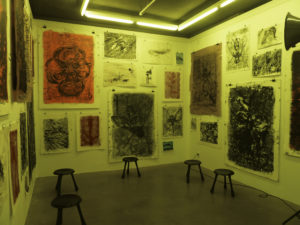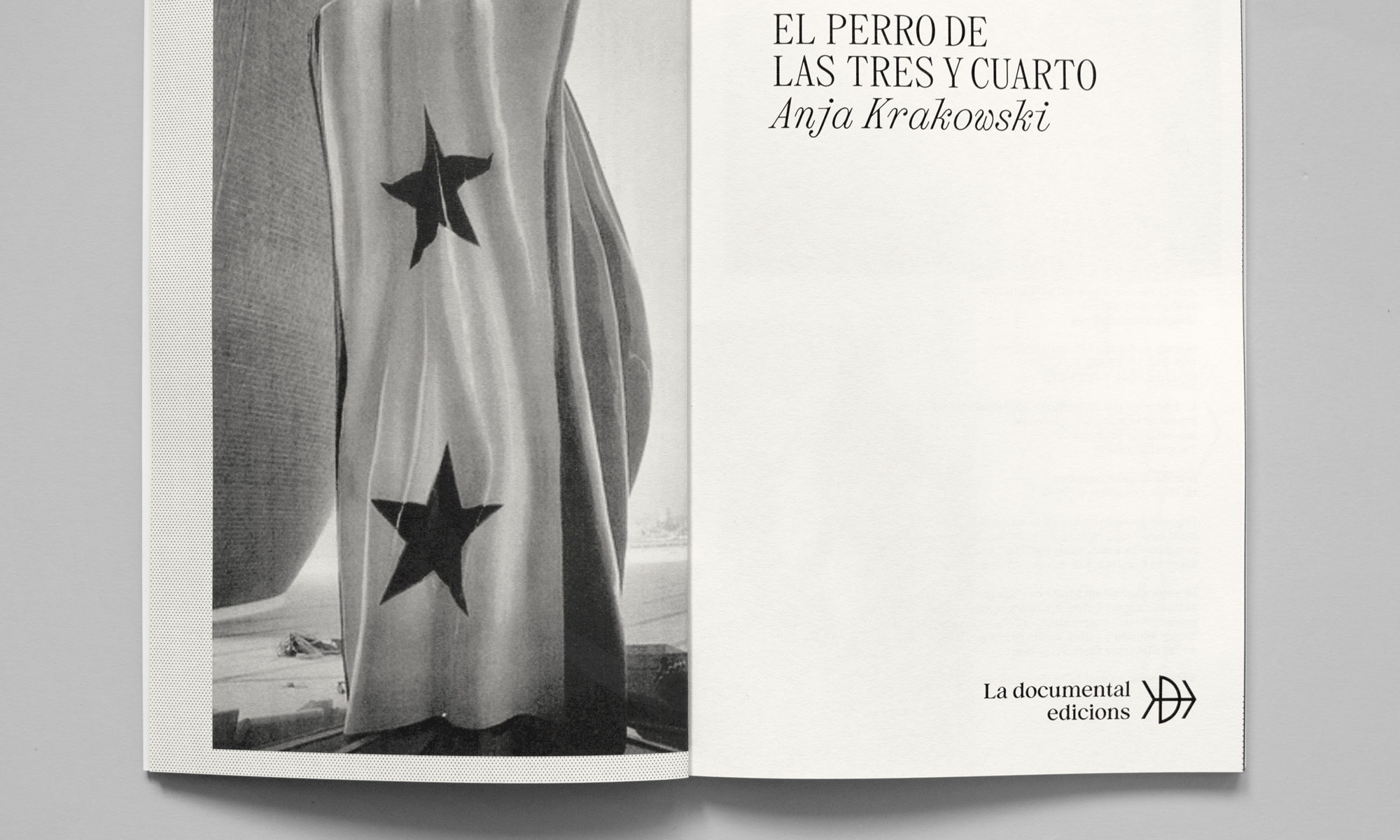Text made in occasion of solo show Geopolitics of Nature, by Oswaldo Maciá, at espaivisor. Until May 24th,  2019

Such is the evolution and degree of sophistication of relational representation, that contemporary visual art questions its own linguistic capacities to the extent that it can even exist without conjuring up images. What, in essence, reflects on the idea of vision —in terms of the perception, generation and ultimate reception of images— also pushes back the boundaries for other senses, which it co-opts as synesthetic qualities. The sense of smell delves deep down in the personal archive of our memory bank, transporting us back to a primeval origin; sound and the sense of hearing are able to create a parallel reality around us that reflects on duration and time. But these are only the means; in the work of Oswaldo Maciá (Cartagena de Indias, 1960), the messages are conveyed through a diversity of research material that embraces everything from a microscopic gaze on migration or the pollination of insects to the macro-political decisions that affect our lives and the habitats in which they are played out.
For the artist, everything that surrounds us is recordable and reproducible material: he takes samples of reality in order to clone it, to create its double. He does so through audio recordings or by producing an olfactory proxy of an existing element that makes us sense something different from what we see, underscoring uncertainty as one of the fine arts. Experiences of the real open up a field of signifiers that are left outside the confines of their signifieds, which are happy to stay within their boundaries. More than a mere play of concepts, language is a crucial element in this series of works and the etymology of some key words (equation, fable, migration, scenario…) generates a non-negotiable bond between the end result and the underlying intention. In this research into origins, there is a quest and an estrangement: a quest for an essence of the concepts as a phase prior to their mass use and subsequent enriching linguistic contamination; an estrangement when becoming aware of the dissociation and wishing to return, by other means, to what was initially intended. This return journey is undertaken by distilling the concepts and purifying them, from which we can once again obtain their essence. The resulting works and installations are the synthetic and select outcome of a broad-ranging theme, like the minimum sample of a maximum edition: an invisible yet evident relationship with syncretic mathematical operations. To a certain extent, this is how nature operates under the rules governing the survival of the species.
Under the Horizon, 2011-2019, is the first of the three installations in this exhibition and this is also the first time that it is being exhibited in a gallery. In the first space as you enter espaivisor, one comes across a bathtub raised on a wider and longer plinth. The water overflows onto the surface of the plinth, creating a closed circuit of water. The water is dyed black, but the smell it gives off reminds us of something else, ostensively unrelated with its physical appearance. The sensorial potential of these works is rooted in the perceptual shift: a ‘scenario’ (the ‘imagined situation’ of its Greek etymology) that does not wed with what one is experiencing in the flesh. This mismatch between what we think we should feel when we see an object, a colour, a movement… and what we really perceive, is at the very core of Oswaldo Maciá’s work. Under the Horizon is, furthermore, a sound installation. The muffled sound of a mechanical industrial movement can be heard from inside the plinth, along with the music of wind instruments. The recording of the machines was made in a factory in Bulgaria during the stress tests for fabric used to make highly sophisticated military uniforms, based on the qualities of certain bird feathers. The installation symbolises the difficulty inherent in grasping this complex world, full of ethical paradoxes, that lies beneath the public’s gaze —and knowledge— like the edge of the overflowing bathtub.
The second of the gallery’s spaces is occupied by Escenario en construcción(2016) which comprises a series of drawings and an audio played over three speakers. The drawings depict birds native to Colombia and graphics of the sound waves of their calls. At the same time, it also includes sketches for the monument made for the roundabout at the corner of Calle 19 and Carrera 3 in Bogotá. This piece is a public sculpture that reflects on the importance of the biodiversity of Colombian fauna and a warning against neglecting it and the need to protect it. The work includes a 60-minute composition of which the first 59 minutes are silent; the final minute of each hour, in the time slot between 7:00 and 19:00, reproduces a composition made from a “sound palette†of 1900 species that live in or travel through Colombia, the country with the greatest diversity of birds in the world. The fact that they can only be heard in the final minute of each hour underscores the urgency of the situation and the increasingly more probable possibility that we are too late. This same audio is reproduced here, in the gallery, composing an overall whole with the drawings and the sketches. The installation is a many-layered mechanism, containing the symbolism of the drawings and the actual sounds of a series of birdcalls (mating, warning, migration …) that take on the resolve to act as a functional language.
In the third room at the end of the gallery, the Colombian artist has located his most recent installation, A Gift to Svalbard. Once again, it is made up of a combination of drawings in different formats made on differing paper supports, along with a symphony of natural sounds and an atmosphere created by yellow light tubes. Svalbard is the Norwegian archipelago in the Arctic which gave its name to the Svalbard Treaty (1920), signed following the First World War, which multilaterally (there are currently 39 countries included in it) recognised Norway’s sovereignty over the islands and their territorial waters. At the same time, it guarantees the signatory countries equal rights in commercial exploitation of the region’s natural resources. Next year the agreement expires and it is likely that this remote part of the planet will see major changes.
The installation borrows its title from the book by the French sociologist Marcel Mauss Essai sur le don (1925) translated into English as The Gift, which analyses the importance of gifts in archaic cultures as a symbol of respect and gratitude. A sign of empathy that seems to have been lost by present-day societies, hopelessly surrendered to Capitalism for whom the more productive, the better. The drawings that ‘wallpaper’ the third space in the gallery show a collection of the fauna and flora of the Arctic, coupled with audios that reproduce migratory winds recorded in different deserts around the planet and the sounds of insects during pollination. For Oswaldo Maciá, nature cannot exist without migration; and society cannot advance without the existence of reciprocal gifts, of cultural exchange. This installation is his way of returning the gift of being able to know Svalbard first hand.
Translated from Spanish by Lambe&Nieto.
